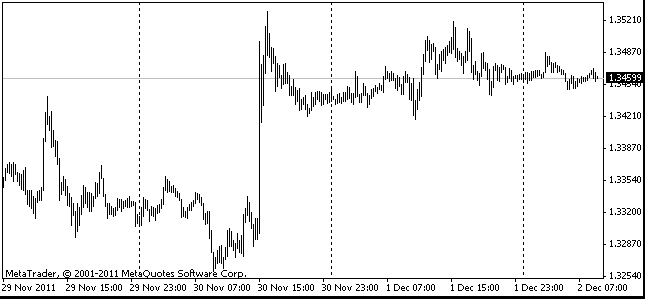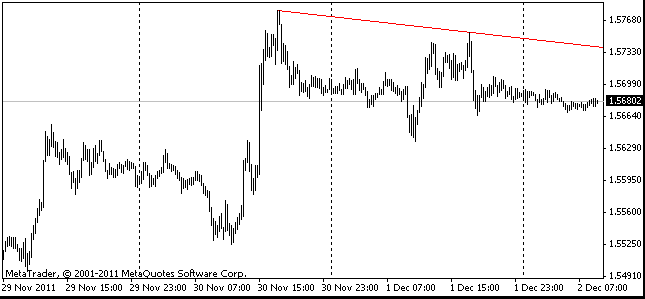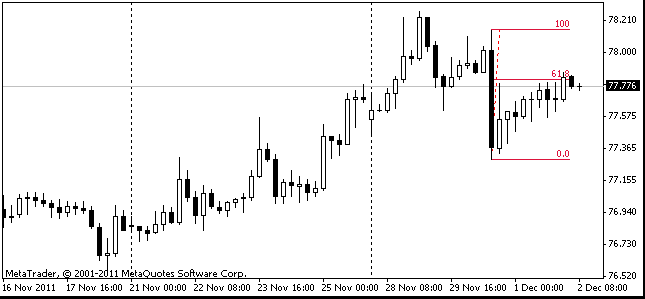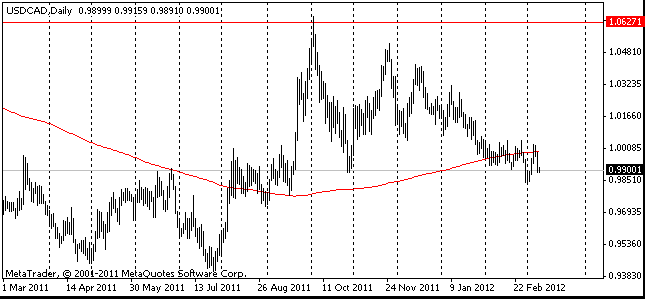EUR/USD
The US markets kept falling yesterday, but it already didn't mean much for the euro. Going down to 1.2715, eurusd hit its 2-month low. However, by the end of the day the pair had stabilized around 1.2745 and at the beginning of active trading in Asia jumped up to 1.2780. Now it keeps trading here (above Thursday's highs). The eventfulness of the day (numerous statistics and the decisions of two CBs) didn't develop into any high volatility in the markets. draghi's comments were moderately optimistic. He noted that the outflow of capitals from the suffering countries' banks changed into the inflow in some cases (no specifications followed). Such news would have provided a stronger impulse for growth of the single currency, if the market players had known that in Italy the number of bad loans is growing by leaps and bounds and that the Spanish banks are too far from breathing a sigh of relief. Besides, Draghi once again emphasized the necessity to observe all the aforementioned terms to launch the mechanism. However, it's worth mentioning that though Spain still can't boast low bond yields (at the beginning of the year they were lower), it has become brave enough to hold long-term bond auctions. Yesterday the country's treasury was selling 20-year bonds. Last time the bonds with such a long circulation term were sold a year and half ago, in May 2011. It should be mentioned here that the yield observed at yesterday's auction doesn't differ much from what we've seen for the last two years of the crisis. The yield has grown to 6.328%, two years ago it was 5.5%. And five years ago (actually at the peak of the market benevolence) the rate made 4.7%. The stats on the US unemployment claims keep improving – the third minimal rate since the beginning of the year and the crisis. And the number of the continuing claims has fallen to the lowest level since July 2008. Another piece of good news for Obama – the US trade deficit keeps decreasing. Again, just like in 2009, the trade deficit makes 10% of the total turnover, however this time due to the growing exports and sharply decreasing commodity prices.

GBP/USD
It's surprising that the absolutely predictable message of the BOE to stick to the same policy caused such a high demand for the sterling. The British currency was paving its way for the dollar and the euro. gbpusd grew to 1.6030 by the noon and today has already hit a low at 1.6070. Thus, the support stood its ground (at least for now). Hence the pound has a chance to grow. However, be careful with the foreign trade stats.

USD/JPY
The Japanese yen is appreciating against the dollar. usdjpy has already dropped down to 79.50. Anyway, in our opinion, it has no strength for the further decline. Testing of 79.30 will be important. In case of going lower, we will be able to speak about the confident victory of the bears. However, it's more likely that around these levels (79.30 – 79.50) the pair will reverse down.

USD/CAD
The canadian dollar is about to test the parity. The currency already made some attempts to do that last night, but hasn't succeeded yet. Even the favourable trade balance statistics released yesterday failed to deter the retreat of the Canadian dollar. The situation looks even more interesting since the parity area coincided with the current level of the 200-day MA. If it is broken (which is highly probable), the further rise is very likely to occur.
